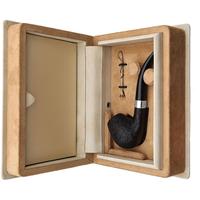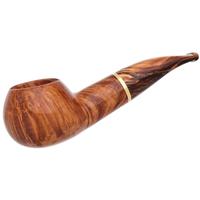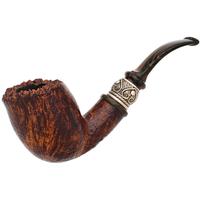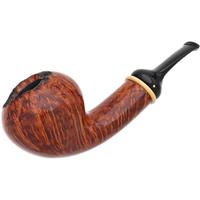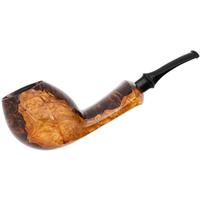The longer a blend has been around the more likely has been altered in some way.
Is it Me, or Is it the Tobacco?
- Thread starter Searock Fan
- Start date
You are using an out of date browser. It may not display this or other websites correctly.
You should upgrade or use an alternative browser.
You should upgrade or use an alternative browser.
Exactly, Now I understand why my dad always said that McDonald's is like eating cardboard compared to what McDonald's was when he was a young adult. I was eating that big mac like it was a prime aged tomahawk steak. My dad just ate the fries. Now I tell my kids the same thing and they eat those nuggets like they were eating a prime aged tomahawk steak lol.The longer a blend has been around the more likely has been altered in some way.
When it comes to tobacco I couldn't tell you what was good before because I've only been smoking 5 years. But as fast as blends are changing nothing will be the same as it is now in another 50 years if it's even being grown by then
I have really enjoyed the Sutliff Original Balkan Sobranie Match, but I couldn't tell you if it's close to the originalWhat is a good substitute for BS? Especially a bulk substitute?
Thanks! I really like it too, but I meant a substitute for Bengal Slices.I have really enjoyed the Sutliff Original Balkan Sobranie Match, but I couldn't tell you if it's close to the original
LOL, sorry, I've had Balkan Sobranie on the brain the last few weeksThanks! I really like it too, but I meant a substitute for Bengal Slices.
There’s certainly lots of hype in the market, and it doesn’t mean it is anything special, it might be, and it might not. There’s always quality stuff no one pays attention too.
My understanding is that there are two major types of latakia tobacco: Cyprian and Syrian. The latter being made unavailable ever since the beginning of the Syrian civil war. So, many English blends that used Syrian tobacco had to switch to Cyprian. If that is accurate, would that then explain the discrepancy in taste when it comes to certain legacy blends that use latakia? I honestly don't know and I ask in earnest.
I took it up in 2019. As yet, I have not experienced a beloved blend change in any significant way. I suspect my first encounter with this phenomena is about to happen with the HU tobaccos that are about to be discontinued (in that I suspect KK will reforumlate them). We'll see!
IMNSHO, I disagree that reviews are of no value. Of course taste is subjective, but there are likely a good many others with similar palates. I enjoy reading reviews from others and often base my purchases, at least in part, on reviews. There are at least a few superb reviewers here that are kind enough to offer their experiences and opinions to others on a great many pipe tobaccos. Personally, I find their reviews to be of great value and entertainment!
I also began my enjoyment of pipes in the late 80's and find offerings now to be, for the most part, every bit as good now as then. Probably because there are a great many more to choose from now.
I also began my enjoyment of pipes in the late 80's and find offerings now to be, for the most part, every bit as good now as then. Probably because there are a great many more to choose from now.

I agree with the idea that the issue is heavily influenced by the few hands making blends these days. Sometimes with cooking for example two good chefs will follow the same recipe and it will come out just differently. Not always better or worse just different. And if only a handful of blenders are working it's going to effect the breadth of qualities. Also I get the impression that smoothiness was more prized by smokers decades ago then it is now.
oh and as far as price. Often we pay a lot more because something is in a more expensive package. You always pay for the packaging. Which is my least favorite part, so I am more prone to buying bulk since it's the same thing just with the caveat that I have to provide a package to store it in and to carry on my person.
Syrian and Cyprian Latakias used different varietals and different components in their processing so there are differences in the resulting flavor which would bring about a different result. Also, like everything else there are differences in the quality of the finished product. So, yes, that would alter the flavor.My understanding is that there are two major types of latakia tobacco: Cyprian and Syrian. The latter being made unavailable ever since the beginning of the Syrian civil war. So, many English blends that used Syrian tobacco had to switch to Cyprian. If that is accurate, would that then explain the discrepancy in taste when it comes to certain legacy blends that use latakia? I honestly don't know and I ask in earnest.
Blenders can make adjustments to the rest of the blend to attempt to reduce those differences.
I realize that I answered only part of your question. Besides the different Latakia, there are also differences in the sourcing of other component tobaccos. Many of the suppliers for those famous blends are long gone. Add to this differences in harvesting, processing, aging, and there are a variety of factors which influence results.My understanding is that there are two major types of latakia tobacco: Cyprian and Syrian. The latter being made unavailable ever since the beginning of the Syrian civil war. So, many English blends that used Syrian tobacco had to switch to Cyprian. If that is accurate, would that then explain the discrepancy in taste when it comes to certain legacy blends that use latakia? I honestly don't know and I ask in earnest.
Just to add on the Syrian point, I thought their Latakia had stopped being exported long before the war due to over-harvesting of the trees or shrubs used to produce the smoke to cure the tobacco. There was then a large fire destroying some remaining stock (I think this was a MacBaren warehouse, but I'm sure someone will correct me if not). I was lucky enough to begin smoking some of these blends before they switched to Cyprian (McB's Vintage Syrian, for example) and it's a noticeably different flavour profile.My understanding is that there are two major types of latakia tobacco: Cyprian and Syrian. The latter being made unavailable ever since the beginning of the Syrian civil war. So, many English blends that used Syrian tobacco had to switch to Cyprian. If that is accurate, would that then explain the discrepancy in taste when it comes to certain legacy blends that use latakia? I honestly don't know and I ask in earnest.
There's also now talk of Turkish Latakia, and I believe @greeneyes has mentioned smoking Ugandan.
I can't help but wonder, would it be possible to produce Latakia in the U.S.?Just to add on the Syrian point, I thought their Latakia had stopped being exported long before the war due to over-harvesting of the trees or shrubs used to produce the smoke to cure the tobacco. There was then a large fire destroying some remaining stock (I think this was a MacBaren warehouse, but I'm sure someone will correct me if not). I was lucky enough to begin smoking some of these blends before they switched to Cyprian (McB's Vintage Syrian, for example) and it's a noticeably different flavour profile.
There's also now talk of Turkish Latakia, and I believe @greeneyes has mentioned smoking Ugandan.

I suppose that depends how much it's defined by process, and how much by the leaves themselves! Even with the process, the wood that's burned to smoke them seems to make a big difference. You could import the Oriental tobacco, but could you import the rare woods?I can't help but wonder, would it be possible to produce Latakia in the U.S.?
I think the Syrian process was said to be six months long or something like that.
I wonder if anyone has ever created hickory-smoked Virginia?
Try Fusilier’s Ration.I tend to agree about the "pointless".
First... I'm what you would call an "old timer" and I remember what blends used to be like, say 50 or even 60 years ago. Trust me, they were better than today. Back in the 60s I smoked a house blend from a local shop. It was an English that had a rich latakia flavor and was smooth as a baby's bottom. It's long gone and I've never been able to find anything like it again. I look at tobacco reviews occasionally, if I can stand how boring those guys are, and am amazed at what they seem to like I hear them rave about how wonderful some blend is that I wouldn't smoke if they paid me. It all comes down to this; the only way you'll know if you like a blend is to try it. Next time you order tobacco add some 1oz. samples of blends you're curious about. Then you'll know.
p.s. By the way, I'm smoking my first bowl of TEN RUSSIANS and I can say this, it's better that Bengal Slices, but not by much.
My negative reviews reminds me of the old story about little Johnny. Little Johnny was 10 years old and had never spoken a word in his life. Then, one morning at breakfast he blurted out "God damit! This fucking milk is sour." His parents were astounded and shocked. His mother said "Johnny, we thought you were mute, why haven't you said any thing before now?" Johnny replied "Up till now every things been ok."
It’s much better than Bengal Slices.
We would have to import the indigenous woods and herbs that they fuelEd their fires with in Syria/ Cyprus.I can't help but wonder, would it be possible to produce Latakia in the U.S.?



